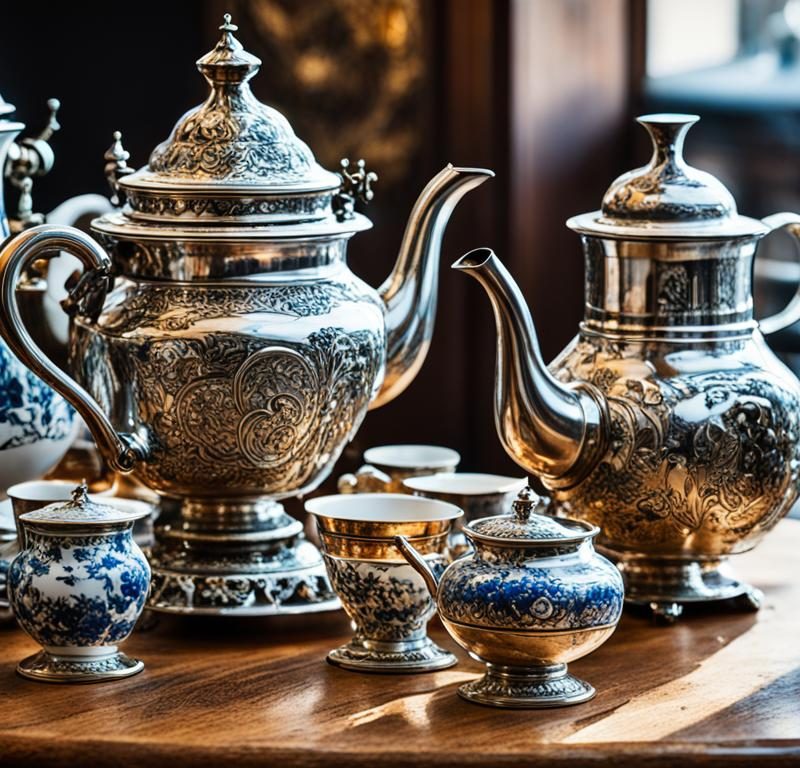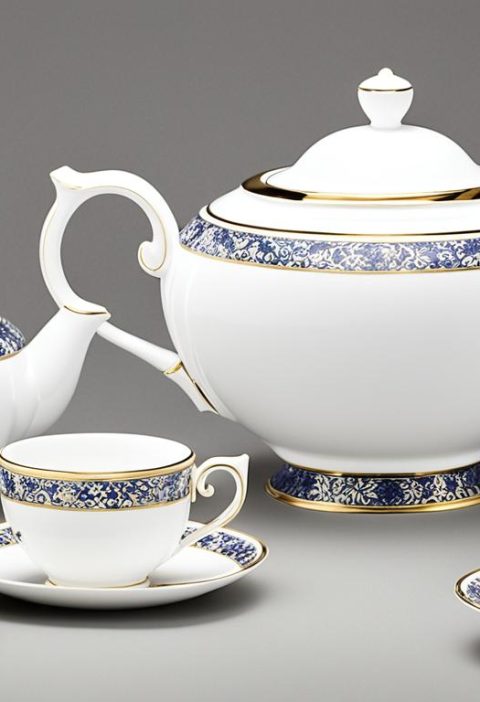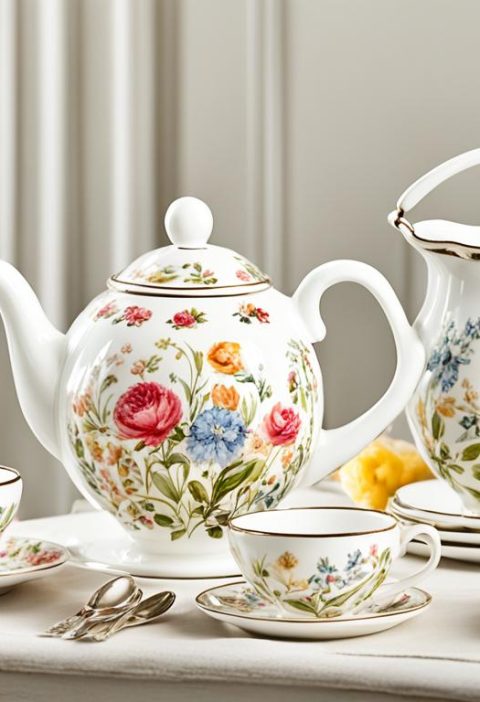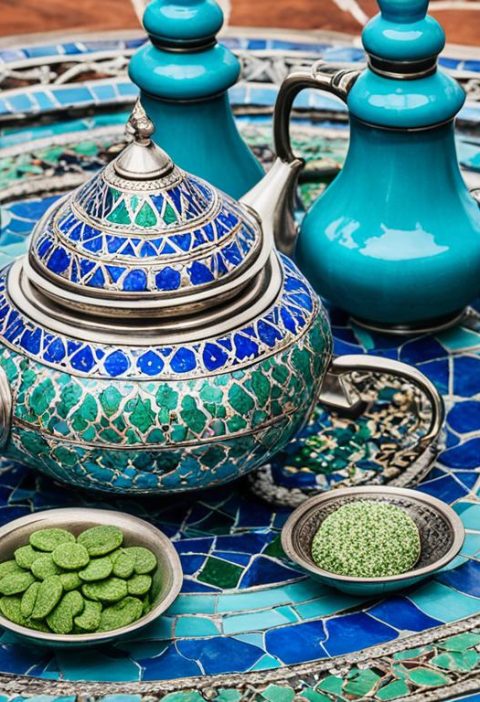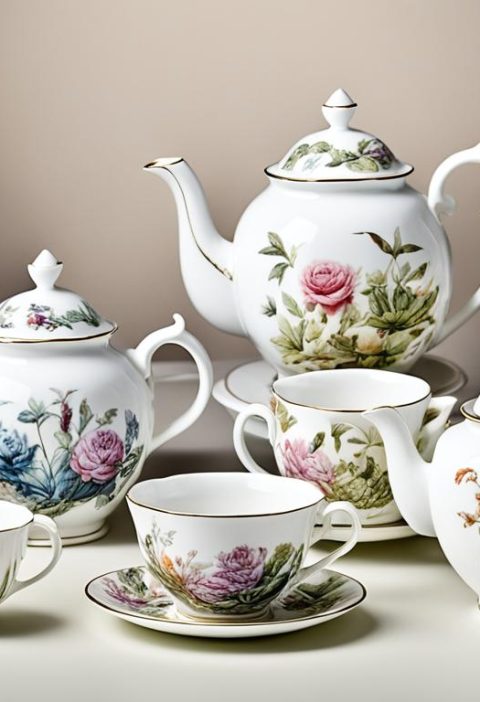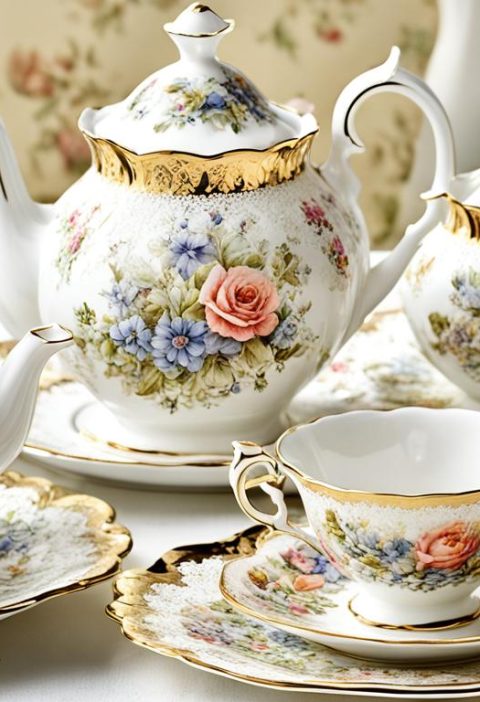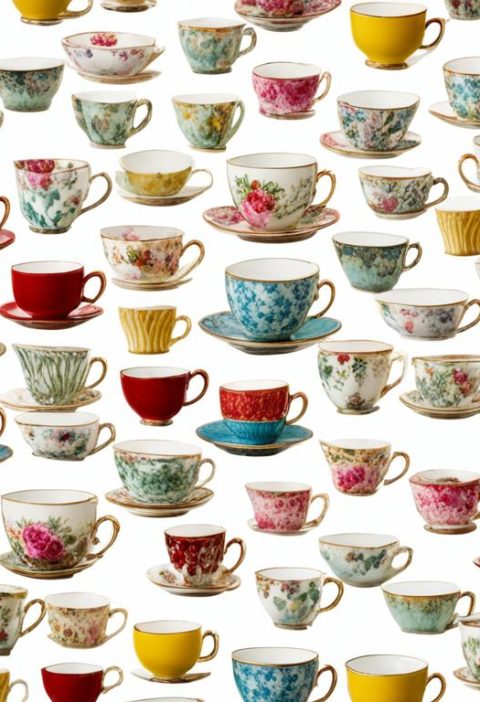A samovar is a metal urn used in Russia to boil water for tea. It is an essential part of Russian tea culture and is often used in conjunction with Russian tea sets. The word “samovar” comes from the Russian language and means “self-boiler.”
Traditional samovars were heated using charcoal, coal, or pine cones, but modern ones are electric. The samovar holds several liters of water at the right temperature and is used to brew strong tea concentrate, known as “zavarka.” Tea is then poured from the samovar into glasses or China cups.
Using a samovar with Russian tea sets adds an element of authenticity and charm to the tea experience. Whether it’s for personal enjoyment or hosting guests, a samovar allows individuals to savor the rich tea culture that is ingrained in Russian tradition.
Key Takeaways:
- A samovar is a metal urn used in Russia to boil water for tea, and it is an essential part of Russian tea culture.
- It is often used in conjunction with Russian tea sets to brew and serve strong, flavorful tea.
- The word “samovar” comes from the Russian language and means “self-boiler.”
- Using a samovar with Russian tea sets adds authenticity and charm to the tea experience.
- Samovars allow individuals to immerse themselves in the rich tea culture that is deeply rooted in Russian tradition.
The History of Samovars
The samovar is a fascinating piece of tea brewing equipment that has deep roots in Russian tea culture. Let’s explore the rich history of samovars and their significance in Russian tea traditions.
How did samovars originate?
The history of samovars can be traced back to 18th-century Russia. During this time, samovars quickly gained popularity and became widely used across all social classes. It wasn’t long before they became an iconic symbol of Russian tea culture.
What were traditional samovars made of?
Traditional samovars were crafted from a variety of metals, such as brass, silver, and iron. These metal samovars were not only functional but also beautifully designed. They often featured intricate engravings and ornate motifs, such as floral and animal designs. This attention to detail added an artistic touch to these tea brewing vessels.
How have samovars evolved over time?
Over the years, different types of samovars were developed to suit varying brewing needs. While the classic samovar was primarily used for brewing tea, there were also samovars specifically designed for brewing coffee. These adaptations allowed individuals to enjoy their preferred hot beverages using the same traditional and captivating brewing tool.
Are samovars still used today?
Indeed, while modern conveniences have introduced alternative methods of heating water, samovars continue to hold a special place in Russian culture. Particularly in rural areas, samovars are still used, keeping the charm and nostalgia of traditional tea brewing alive.
Samovars are an essential part of Russian tea culture, symbolizing warmth, togetherness, and hospitality. They serve as a reminder of the rich heritage and traditions associated with tea in Russia, making them a treasured item in many households.
Using a Samovar with Russian Tea Sets
Using a samovar with Russian tea sets is a delightful and traditional way to enjoy a cup of tea. The samovar, with its rich history and unique brewing method, adds an element of charm to the tea-drinking experience.
How do I use a samovar with Russian tea sets?
Using a samovar is a simple and enjoyable process. Here’s a step-by-step guide:
- Step 1: Filling the samovar
Start by filling the samovar with hot water. This can be done through the opening at the top or by removing the lid. Ensure that the samovar is filled to the appropriate level. - Step 2: Preparing the tea concentrate
Place a teapot containing strong tea concentrate, also known as “zavarka,” on top of the samovar. To prepare the tea concentrate, steep a fair amount of tea leaves in a small amount of water. - Step 3: Steeping the tea concentrate
Allow the tea concentrate to steep on top of the samovar. The heat from the samovar will gradually infuse the tea leaves, creating a strong and flavorful concentrate. - Step 4: Serving the tea
To serve the tea, each person is given a small quantity of the tea concentrate in a cup or glass. They can then dilute the concentrate to their desired strength by adding water from the spigot of the samovar.
Using a samovar with Russian tea sets not only ensures a delicious cup of tea but also provides a unique and memorable tea-drinking experience. The gentle warmth of the samovar and the traditional brewing method create a sense of nostalgia and evoke the rich tea culture of Russia.
The Significance of Samovars in Russian Tea Culture
In Russian tea culture, the samovar holds a significant place. It is often the centerpiece of the tea table and is considered the soul of the tea ceremony. The lady of the house takes on the important role of pouring the tea, while the samovar itself is believed to “sing” as the water boils, creating a unique and pleasant ambiance.
Russians have various traditions and preferences when it comes to drinking tea from a samovar. It is not just about the tea itself; it is about the whole experience and the social connections that it fosters. For Russians, tea is more than just a beverage; it is a symbol of friendship, hospitality, and comfort.
Why is the samovar considered the soul of the tea ceremony?
The samovar holds a central role in Russian tea culture because it embodies the essence of tea-making and drinking. The beautiful, ornate designs of traditional samovars elevate the tea-drinking experience, making it a visual feast as well. The enchanting sound of the samovar “singing” as the water boils adds a touch of magic to the atmosphere, creating a sense of anticipation and joy among the tea drinkers.
What are some traditional practices associated with the samovar in Russian tea culture?
In Russian tea culture, there are many time-honored traditions associated with the samovar. For example, Russians often add sugar cubes or a spoonful of homemade jam to their tea to enhance the flavor. Some people enjoy placing a leaf of mint or a blackcurrant leaf in their tea for a refreshing twist. These little rituals and personal preferences add depth and individuality to the tea-drinking experience.
How does the samovar facilitate social connections?
The act of gathering around a samovar to enjoy a cup of tea is a cherished ritual in Russian households. It serves as a focal point for meaningful conversations, bonding, and creating lasting memories with loved ones. The samovar encourages people to slow down, savor the moment, and connect on a deeper level. It brings people together and nurtures a sense of togetherness and community.
What role does the lady of the house play in the tea ceremony?
In Russian tea culture, the lady of the house holds a special role in the tea ceremony. She is often the one responsible for pouring the tea from the samovar, ensuring that each guest receives a warm cup of tea. This act of hospitality reflects the host’s care and attention to their guests’ comfort. The lady of the house becomes a gracious and nurturing presence, embodying the essence of Russian tea culture.
Now that we understand the significance of samovars in Russian tea culture, let’s explore how the samovar is intricately used with Russian tea sets and the brewing process itself.
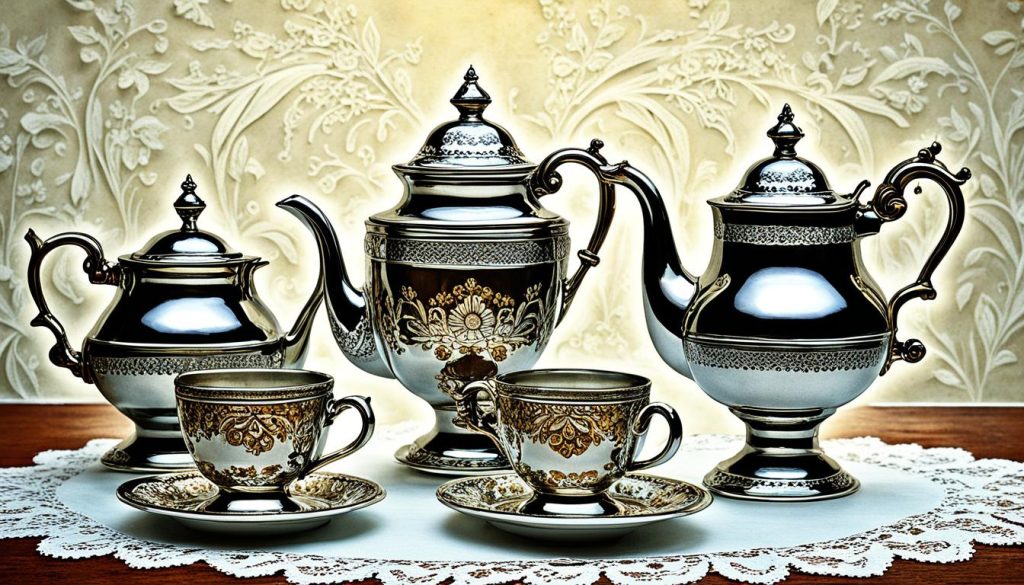
Table: Popular Tea Varieties in Russian Tea Culture
| Tea Type | Description |
|—————-|———————————————————————————————–|
| Black Tea | The most common tea variety in Russia, appreciated for its robust flavor and bold character. |
| Herbal Tea | A popular choice for its soothing and calming properties, often enjoyed before bedtime. |
| Green Tea | Gaining popularity in recent years, known for its numerous health benefits and delicate taste. |
| Berry Infusion | Made from a variety of berries, these fruity infusions provide a refreshing and vibrant flavor.|
As we delve further into the world of tea culture in Russia, let’s explore the history of samovars in the next section.
Samovar and Family Gatherings
The samovar holds a special place in Russian family gatherings, symbolizing warmth, togetherness, and hospitality. It creates an inviting atmosphere, encouraging people to gather around and enjoy the company while sipping hot, flavorful tea. The presence of the samovar on the table is a testament to the importance of tea in Russian home life, serving as a centerpiece that exudes a sense of tradition and culture.
The sound of the samovar boiling water and the aroma of freshly brewed tea adds to the ambiance, enhancing the overall experience. As family and friends come together, the magic of tea combined with the presence of the samovar can bring people closer, fostering meaningful connections and creating lasting memories.
Just like family traditions, the samovar is often passed down from one generation to another, carrying stories and memories of countless family gatherings. It becomes a cherished heirloom, representing the rich tapestry of family history and serving as a reminder of the bond shared by loved ones.
Bringing People Together
The samovar’s significance lies not only in its role as a tea-brewing tool but also in its ability to unite and connect people. It serves as a focal point for conversation, laughter, and heartfelt moments during family gatherings. Whether it’s during holidays, birthdays, or casual get-togethers, the gathering around the samovar creates a sense of unity, enriching the bonds between family members.
Sharing Stories and Traditions
As families and friends gather around the samovar, they share stories, anecdotes, and cultural traditions. The intimate setting created by the presence of the samovar encourages open conversations and the passing down of family history from one generation to the next. It is a time for grandparents to share their wisdom, parents to impart life lessons, and children to absorb the teachings of their ancestors.
Tea rituals and traditions are also shared, ensuring that the art of brewing and serving tea is upheld and respected. These traditions carry the essence of Russian tea culture and serve as a reminder of the importance of cherishing family connections and preserving cultural heritage.
A Symbol of Hospitality
In Russian culture, offering tea is a gesture of hospitality and warmth. The samovar, with its comforting presence and the delicious tea it produces, embodies this sense of hospitality. It signifies the willingness of the host to welcome and nurture guests, creating an environment where everyone feels comfortable and valued.
As the tea is poured from the samovar into cups or glasses, it is not just a beverage; it is an invitation to connect, share, and appreciate the company of loved ones. The samovar becomes a conduit for the exchange of stories, laughter, and the building of lifelong memories.
Whether holding a family gathering, hosting friends, or simply savoring a quiet moment alone, the samovar is a symbol of love, togetherness, and the enduring power of Russian tea culture.
Conclusion
The samovar is an integral part of traditional Russian tea culture. Its purpose goes beyond being just a piece of tea brewing equipment—it represents a centuries-old tradition and adds authenticity to the tea experience. When used with Russian tea sets, the samovar brews and serves strong, flavorful tea, creating a warm and inviting atmosphere.
Throughout history, samovars have held a special place in Russian households and gatherings. They have been cherished for their exquisite craftsmanship and the unique charm they bring to the tea table. The ritual of using a samovar to make tea adds a touch of elegance and tradition to any occasion.
Whether you’re enjoying a cup of tea by yourself or hosting guests, incorporating a samovar into the tea experience is a way to savor the rich tea culture that is deeply rooted in Russian tradition. The sight and sound of the samovar boiling water, the aroma of freshly brewed tea, and the joy of sharing a cup with loved ones—all of these elements come together to create a truly memorable tea-drinking experience.
So the next time you’re looking to brew a cup of traditional Russian tea, consider using a samovar with your Russian tea set. Embrace the history, the tradition, and the art of making tea in a samovar—it’s an opportunity to experience the true essence of Russian tea culture.
